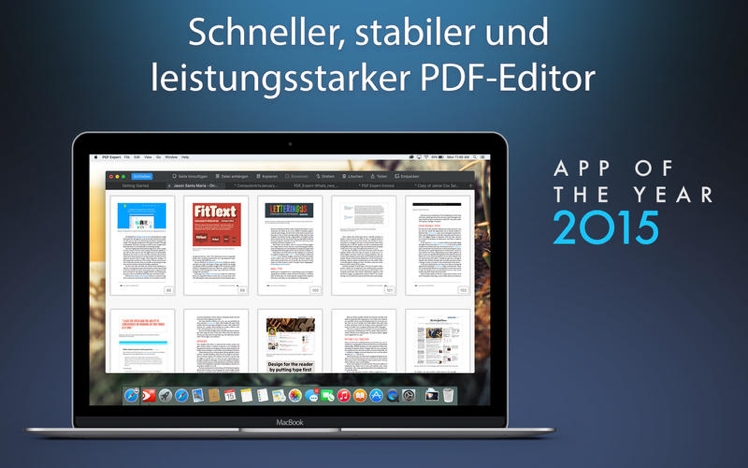
- #Pdf expert for mac 3 macs pdf
- #Pdf expert for mac 3 macs software
- #Pdf expert for mac 3 macs password
- #Pdf expert for mac 3 macs iso
The UI components used to convey that nuance are often (necessarily) pretty complicated.

On the other hand, with digital signatures, validation could fail for a lot of reasons 3. It's easy to simply validate a MAC token when an encrypted document is opened, and throw up an error if there's a mismatch. MACs don't distinguish between participants, which also serves as a huge simplification in this case. As long as all parties always check & recreate the MAC whenever they make a change 2, you only need to validate the outermost MAC.

Some of these signatures can arguably even be non-authenticating 1. ) are involved, often across multiple revisions of the same document.

PKI is hardĪdditionally, the asymmetric nature of digital signatures comes with a lot of added complexity: Whether that's a good idea is of course another question. There's no technological reason why one couldn't also define a password-based (?) integrity checking mechanism for unencrypted PDFs. It's just that, when operating on encrypted PDFs, there's already a shared secret to work with, and that's convenient to bootstrap from.
#Pdf expert for mac 3 macs pdf
ISO/TS 32004 only deals with encrypted PDF documents, but generally speaking, there's actually nothing about MACs that makes them only applicable to encrypted data. In fact, due to the way PDF encryption works, it's perfectly practical to add a signature form field to an encrypted document and sign it with any old key without even knowing the encryption key! Surely that doesn't qualify as "authenticated encryption"? Note With digital signatures, that's not possible: the key material is unrelated.
#Pdf expert for mac 3 macs password
When protecting an encrypted PDF document using a MAC, we want the MAC key and file encryption key to be computable from the password (+file data). From the cryptographic point of view, sender and receiver are indistinguishable. In the case of MACs, the sender and receiver use the same shared secret to produce and to validate the MAC, respectively.Creating a signature requires the private key, but the public key is sufficient for validation. Digital signatures rely on asymmetric cryptography, with public-private key pairs.Cryptographic differencesįirst, MACs and signatures are based on completely different cryptographic principles.
#Pdf expert for mac 3 macs software
Some of the differences are intrinsic, others have more to do with how digital signatures are used in PDF documents and how PDF software processes them. That said, MACs and digital signatures really aren't interchangeable. That's a very natural question to ask, and you certainly wouldn't be the first one to raise the point. If you've dabbled in PDF-related development before, your first thought might be "Wait, why are we having this whole integrity protection conversation? Can't you just slap a digital signature on your encrypted files and call it a day?".
#Pdf expert for mac 3 macs iso
This is an addendum to ISO 32004: an overview with some additional background information on how MACs (Message Authentication Codes) differ from regular signatures, and what that implies for their usage in PDF.


 0 kommentar(er)
0 kommentar(er)
